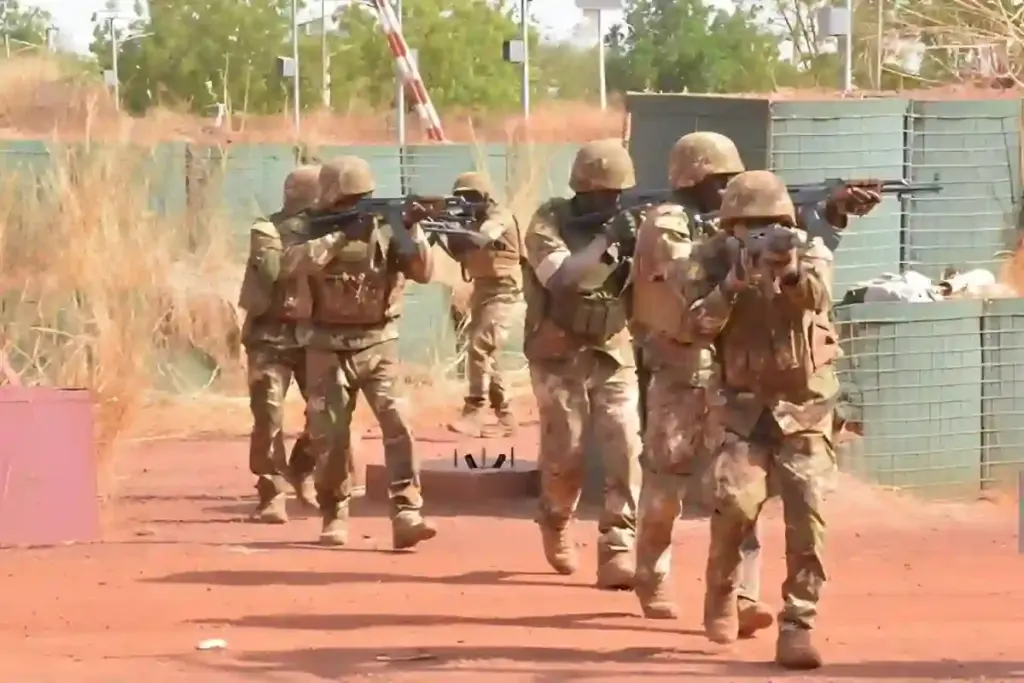Just when many thought the worst of the insurgency had subsided, Mali was rocked by a series of brazen militant attacks across multiple cities on July 1, 2025.
From the quiet town of Nioro du Sahel to the busy streets of Kayes, gunfire, smoke, and fear suddenly replaced normal life.
Residents in affected areas like Nioro, Kayes, Sandere, and Gogui described the situation as chaotic and terrifying—especially those living near the Kayes governor’s residence, where heavy gunfire and rising smoke sent panic through the streets.
Borders Under Pressure as Violence Creeps In
These attacks didn’t happen in isolation.
The targeted cities sit close to Mali’s borders with Mauritania and Senegal, raising fresh alarms about how easily unrest could spill across boundaries and destabilize the wider region.
As militants move more freely through the Sahel, neighboring countries are growing increasingly anxious about cross-border threats and arms trafficking.
Al-Qaeda-Linked JNIM Claims Responsibility
Responsibility for the coordinated assaults was quickly claimed by Jama’at Nusrat al-Islam wal-Muslimin (JNIM), a group linked to al-Qaeda.
In a statement shared via regional media and cited by Al Jazeera, the group took credit for capturing multiple military sites, including three army barracks.
They described the operation as “high-quality” and “strategic,” claiming it was part of a broader push against the Malian government.
It’s worth noting this was JNIM’s third major attack in just one month—a concerning trend for both local and international observers.
Mali’s Army Fights Back With Force
In response, Mali’s armed forces launched a swift counterattack, reporting that they killed 80 insurgents across different battle zones.
According to army spokesperson Souleymane Dembele, the military also seized weapons, motorcycles, and vehicles used during the attacks.
To drive the point home, state TV aired images of the dead rebels, underscoring the government’s message that they would not tolerate such violence.
However, the number of Malian military casualties has not yet been made public.
A Nation Still Battling a Long War
Mali has been grappling with Islamist insurgencies for over a decade, and despite some efforts to stabilize the country, the security situation remains fragile.
Groups linked to both ISIL and al-Qaeda have exploited the country’s vast and often ungoverned spaces.
Since the 2020 military coup, Mali’s transitional government has faced difficulties securing international support, which has only complicated matters further.
In May 2025, U.S. Africa Command warned of growing militant influence along West Africa’s coastline, highlighting the Sahel’s vulnerability to weapons smuggling and radicalization.
A Growing Crisis Beyond Mali’s Borders
These latest attacks aren’t just Mali’s problem.
They signal a deepening regional crisis, one that threatens to destabilize neighboring countries and overwhelm already thinly stretched security forces.
General Michael Langley, a top U.S. commander, recently pointed out that the Sahel is becoming a hub for arms trafficking, feeding militant movements and undermining governments throughout West Africa.
What Now for Mali and the Region?
With coordinated insurgent attacks increasing and regional borders under pressure, the question now is: What more can be done to stop the growing influence of militant groups in the Sahel?
Should international coalitions step in more aggressively?
Is it time for more localized, community-based security measures? These are tough questions without easy answers—but they demand urgent attention.

